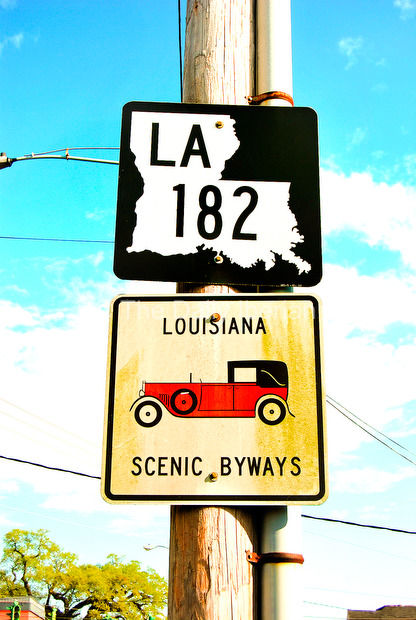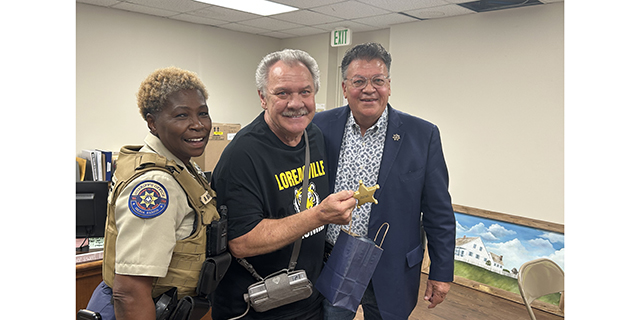Making History
Published 7:00 pm Tuesday, March 24, 2015

- Making History
“If you want something said, ask a man; if you want something done, ask a woman.”
— Margaret Thatcher, Former Prime Minister of the United Kingdom 1979-1990
Teche Life Editor’s Note: For this final of four articles on the impact of women in Iberia Parish who have or still play a role in our history, tourism is the topic.
Three women in New Iberia could easily be forgotten. That’s what happens when someone works in the background to get things done without considering the payoff for themselves.
Virginia Kyle Hine, Dawn Hebert Duhé and Jess Musson were known as the “Mesdames of Main Street.” Their legend may not be known to newcomers, but to those who have lived in Iberia Parish for any amount of time, the family names are memorable.
“We felt strongly about what we wanted to preserve, what was indicative of the parish,” said Duhé, 78, the only living member of the initial group who tirelessly worked with local residents, businesses, civic groups and government agencies to put New Iberia on the map for tourism.
As the daughter of the longest-serving member of the U.S. House of Representatives, U.S. Rep. Felix Edward Hebert, Dawn grew up experiencing the big city life in New Orleans and Washington D.C. and the benefits of living outside the fast-paced world. She was the first woman president of the Greater Iberia Chamber of Commerce and was responsible for convincing town leaders in the early 1980s to purchase the building they now occupy on Main Street.
Her legacy also will herald the fact one of her four children, Martin Bofill “Bo” Duhé, is the 16th Judicial District Attorney serving Iberia, St. Mary and St. Martin parishes. Her work behind the scenes locally, for the past 20 years at the Sheriff’s Office in New Iberia, and throughout the state, will receive little note. However, visitors and residents of Louisiana experience her handiwork and will for generations to come.
Duhé’s specialty, grant writing, results in funding of programs for historical preservation, capital improvements or operating funds and is crucial for growth and perpetuation. Although her lifetime has been filled with exciting projects involving entertainers, sports celebrities and political leaders, she has dedicated her skills and understanding of fiscal responsibility to helping law enforcement and government branches, historical societies and nonprofit organizations find the resources they need to succeed. She’s traveled from New Orleans to Shreveport and along backroads between helping others.
One of the grants she wrote resulted in the award given to New Iberia by the Louisiana Cultural Economic Foundation at its 2004 Summit in New Orleans.
Although Duhé knew Virginia Kyle Hine, it was not until they shared an airplane ride from Atlanta together in the 1970s that they realized they shared a common interest: Promoting their hometown. Duhé then approached her friend, Musson, the wife of one of New Iberia’s prominent residents, to join them in publicizing and promoting Iberia Parish.
“There were talks about modernizing the city,” Duhé said.
Believing that was not the path for the city, they approached the leaders and proposed something new to preserve the heritage of the Spanish-French community. In 1974, Duhé, Hine and Musson organized the “Mesdames of Main Street,” a volunteer group interested in improving the facades of businesses located on New Iberia’s Main Street.
The women canvassed stores in the downtown area, showing French Quarter paint samples and examples of architectural improvements that could be applied to storefronts in an attempt to interest merchants in upgrading the buildings. The process of improving downtown continues today and touches the heart of Project Front Yard, conscientiously encouraging pride in the community.
Duhé and Hine became active in local and state tourism and helped to establish the Louisiana Scenic Byways program which runs through many of the small communities and towns, as well as rural areas of the state.
Together they participated in getting recognition of Main Street’s Historic District with signage permanently displayed at the beginning and throughout the residential and business district. They were part of the citizens group that built the popular Bouligny Plaza where festivals and cultural events take place throughout the year.
Long before the trio started seeing results on the state level, Hine had begun to build local awareness by merely sharing her love for the region with her children, who had spent many years outside the United States.
Another friend of Hine, Diane Marquart Moore, an author from New Iberia, explained the history of tourism in Iberia Parish through the life of Hine in the book, “Their Adventurous Will: Profiles of Memorable Louisiana Women.” At the time of publication, 1983, Hine was still living.
“If Virginia asks for help, the project is a valid one that will benefit the economy and culture of the community or parish,” Moore wrote.
“When Virginia Kyle Hine returned to the United States after spending 14 years as a wife to an engineer who managed a large engineering firm in Cuba (the last year having been spent under Fidel Castro’s regime), she felt that her life was ‘just destroyed’. No one in her native town of New Iberia knew she had feelings of devastation. She had begun to lecture children in Iberia Parish schools and community citizens about the ‘good life of an American’.”
Hine said, “I had seen tourism and the way it operated, the free dollars that had come into Cuba, and I thought if there was some way I could repay the people in Iberia Parish for their (warm) reception of me back into the fold, I wanted to do so. Promoting tourism was the way I chose.”
Hine died in the late 1980s while Duhé was living in New Orleans doing much of the same work she is known for in Iberia Parish. Reading the account of Hine’s accomplishments in Moore’s book inspired the research for this story.
In short, Hine built the first tourism center, published the first tourism brochure, helped establish state and local procedures and organizations and inspired others to do good works.
“I will never understand people who are bored with life,” Hine told Moore, “I know it sounds square in this decade of the twentieth century, but every day is a new day to me. I look forward to getting up each morning and starting a project.”
Next time you’re driving down the back roads of Louisiana or through New Iberia’s Historic District and see the signs, you’ll know how they got there.





